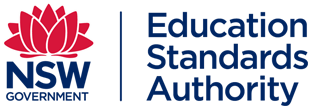Case study - Savannah
This case study illustrates adjustments for a student with disability in Stage 2.
Savannah is in Year 3 and has sensory processing disorder. She is in a mainstream classroom in a primary school.
Stage 2
Collaborative curriculum planning for Savannah
Savannah has sensory processing disorder. She has sensory aversions and sensory sensitivities. She has good gross motor skills but has difficulties with her fine motor skills. She receives support from a teacher’s aide for self-regulation, to process sensitivities and support her social skills.
Savannah attends occupational therapy sessions weekly to help her develop and strengthen her fine motor skills and work on strategies to appropriately meet her sensory needs. She takes longer to grasp new concepts and skills but will then spend a lot of time in refining these skills. She has great hearing, which can mean she hears background and environmental levels quite loudly, but struggles with listening, processing auditory information and comprehending instructions. She has challenges with executive functions, including emotional control, organisation and task initiation.
Savannah constantly seeks out deep pressure from objects and/or peers and shows heightened reactivity with particular textures. She is easily distracted and fidgets constantly. She taps objects against her leg and rocks her body throughout the day.
Savannah is accessing and working towards Stage 2 outcomes in all KLAs. Outside of school Savannah does Judo and Little Athletics.
Adjustments for Savannah
Through the collaborative curriculum planning process, Savannah’s support team, including her allied health team, have identified that she requires supplementary adjustments in all her subjects. In particular, she requires opportunities to meet her sensory needs throughout her day. The following goals have been identified for Savannah:
- increasing fine motor skills
- developing self-regulation strategies
- increasing independence in using sensory tools or breaks as required
- improving transitions between tasks or environments
- increasing independence initiating tasks
- improving comprehension.
Using the information and decisions from the collaborative curriculum planning process, Savannah’s teacher considers appropriate adjustments for Savannah to complete class work.
Below is a list of goal's for Savannah:
Goal: increasing fine motor skills
Adjustments:
- The use of adaptive tools (including scissors), as per input from her allied health team, to support the development of fine motor skills.
Goal: developing self-regulation strategies
Adjustments:
- Sitting on an exercise ball in the classroom.
- Providing Savannah with skills to communicate to staff that she needs a break.
- Providing resources/equipment to minimise the need for Savannah to move around the classroom.
- Explicitly teaching Savannah strategies to communicate her emotions and select appropriate sensory tools and activities to self-regulate.
Goal: increasing independence initiating tasks
Adjustments:
- Breaking down instructions into short manageable steps supported with visual cues and/or schedules.
- Minimising verbal instructions, where possible.
- One-to-one assistance for new and unfamiliar routines, including school excursions and whole school activities.
Goal: improving comprehension
Adjustments:
- Using a scaffold such as a three-level guide to support text comprehension.
- Increasing wait time to allow Savannah to process auditory information.
- Tasks to be coded with familiar and known visual cues.
Goal: increasing independence in using sensory tools or breaks as required
Adjustments:
- The use of visual supports to request sensory tools or breaks.
- Having an exercise ball to sit on and fidget toys readily available.
- Class timetable scheduled to facilitate use of sensory tools and breaks.
- Classroom has appropriate furniture and layout to minimise distractions.
Goal: improving transitions between tasks or environments
Adjustments:
- Building movement or sensory breaks into the class timetable.
- Allowing Savannah to set up equipment or throw a ball against a wall before commencing physical activity to meet proprioceptive needs.
- Provide a visual schedule to prepare for upcoming activities and/or transitions.
This resource has been provided by NSW Education Standards Authority (NESA) who work with the NSW community to drive improvements in student achievement. You can find further information, news and updates on the NESA website.
© 2021 NSW Education Standards Authority for and on behalf of the Crown in right of the State of New South Wales.
